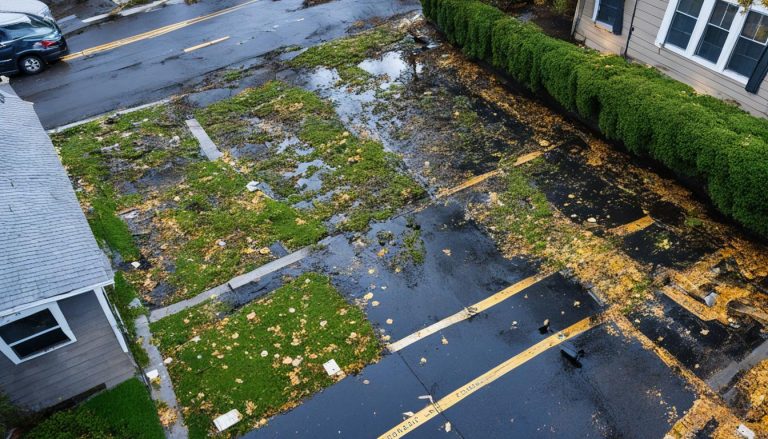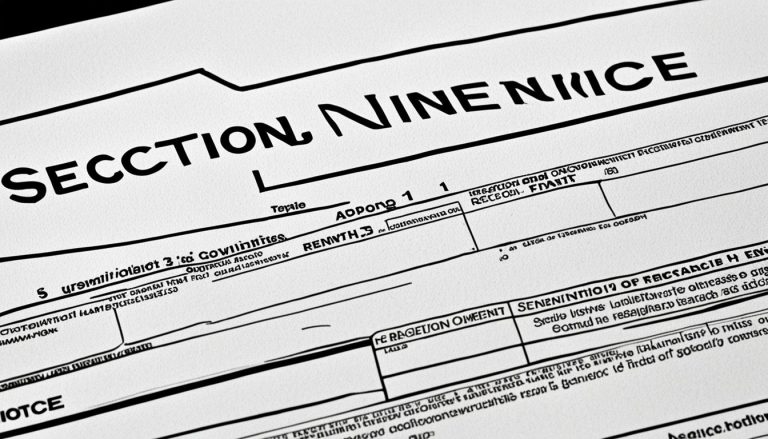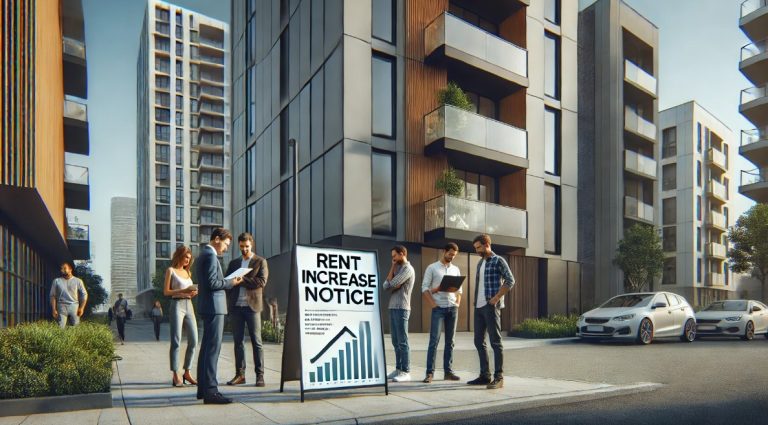The Landlord and Tenant Act 1927 is a crucial piece of legislation in the United Kingdom that governs the rights and responsibilities of landlords and tenants in residential properties. This comprehensive guide will delve into the historical background, key provisions, and scope of the Act, as well as its applicability and exceptions. The guide will also cover important aspects such as rent control and regulations, residential tenancy agreements, property maintenance and repairs, grounds for possession and eviction, security deposits and tenancy termination, and common landlord-tenant disputes and their resolution.
Understanding the Landlord and Tenant Act 1927
The Landlord and Tenant Act 1927 was enacted to address the issues faced by both landlords and tenants in the residential rental market. The Act aimed to provide a framework for regulating the relationship between landlords and tenants, ensuring a balance of rights and responsibilities.
Historical Background and Purpose
The Landlord and Tenant Act 1927 was introduced in the United Kingdom to address the growing concerns about the rights and obligations of landlords and tenants in the residential property sector. The Act was intended to create a more equitable system, protecting the interests of both parties and promoting a harmonious co-existence.
Key Provisions and Scope
The Landlord and Tenant Act 1927 covers a wide range of aspects related to the landlord-tenant relationship, including rent control, property maintenance, tenancy agreements, and dispute resolution. It sets out the key rights and responsibilities for both landlords and tenants, ensuring a more transparent and regulated residential rental market.
Applicability and Exceptions
The Landlord and Tenant Act 1927 applies to most residential tenancies in the UK, with some exceptions. Certain types of properties, such as social housing and commercial premises, may be subject to different legislation or regulations. It is important for both landlords and tenants to understand the scope and applicability of the Act to ensure compliance and protect their respective rights.

Rent Control and Regulations
The Landlord and Tenant Act 1927 includes provisions for rent control and regulations, which aim to protect tenants from unreasonable rent increases. The Act imposes restrictions on the landlord’s ability to raise rents, requiring them to follow specific procedures and criteria for any rent increases.
Rent Increase Restrictions
Under the Landlord and Tenant Act 1927, landlords are required to adhere to strict guidelines when increasing rents. They must provide tenants with proper notice, typically at least one month, and justify any proposed rent hike based on factors such as changes in property values, maintenance costs, or inflation. Tenants are afforded the right to challenge unreasonable rent increases through the appropriate channels.
Fair Rent Determination
The Act also establishes a framework for the determination of fair rents by impartial authorities. Tenants can apply to have their rents assessed and adjusted to a reasonable level, taking into account the property’s condition, location, and other relevant factors. This process aims to ensure a balanced and equitable rental market, protecting both landlords and tenants from exploitation.

Residential Tenancy Agreements
The Landlord and Tenant Act 1927 sets out the essential requirements for residential tenancy agreements, ensuring that key terms and conditions are included to establish a clear understanding between landlords and tenants. These agreements, also known as lease agreements, outline the duration of the tenancy, the rent amount, and the respective responsibilities of both the landlord and the tenant.
Essential Terms and Conditions
A residential tenancy agreement under the Landlord and Tenant Act 1927 must specify the length of the tenancy, the amount of rent to be paid, and the date on which the rent is due. Additionally, the agreement should detail any restrictions on the tenant’s use of the property, such as prohibitions on subletting or making alterations without the landlord’s consent.
Landlord Obligations
The Landlord and Tenant Act 1927 imposes various obligations on landlords, including the duty to maintain the property in a habitable condition, carry out necessary repairs, and ensure the safety of the tenant’s living environment. Landlords are also responsible for securing the tenant’s deposit in an approved scheme and providing the tenant with relevant information about the property and their rights.
Tenant Rights and Responsibilities
Under the Landlord and Tenant Act 1927, tenants have the right to enjoy the peaceful occupation of the property, receive timely responses from the landlord regarding maintenance and repairs, and have their deposit returned at the end of the tenancy, provided that no valid deductions are made. Tenants, in turn, are responsible for taking care of the property, paying rent on time, and adhering to the terms of the tenancy agreement.
Property Maintenance and Repairs
The Landlord and Tenant Act 1927 addresses the responsibilities of landlords and tenants regarding property maintenance and statutory repairs. The Act outlines the landlord’s obligations to maintain the property in a habitable condition, requiring them to carry out necessary repairs and ensure the dwelling is fit for human habitation.
Statutory Repairs and Obligations
Under the Landlord and Tenant Act 1927, landlords are required to undertake statutory repairs to the property, which includes repairing the structure and exterior, ensuring the property is weatherproof, and maintaining the installations for water, gas, electricity, and sanitation. Failure to fulfil these obligations can result in legal consequences for the landlord.
Dilapidations and Diminution in Value
The Act also addresses the issue of dilapidations, which refers to the deterioration of the property due to neglect or damage. Landlords have the right to claim compensation from tenants for any diminution in value of the property caused by the tenant’s actions or inaction during the tenancy.
Landlord’s Right to Access Property
The Landlord and Tenant Act 1927 grants landlords the right to access the property for the purpose of inspecting its condition and carrying out necessary repairs. However, this right is subject to reasonable notice being given to the tenant, and the landlord must ensure that the tenant’s right to quiet enjoyment of the property is not unreasonably disrupted.

Security Deposits and Tenancy Termination
The Landlord and Tenant Act 1927 addresses the important issue of security deposits, requiring landlords to protect the deposits in approved deposit protection schemes. This ensures that the security deposits are held securely and can be returned to the tenant at the end of the tenancy, provided that there are no valid deductions.
Deposit Protection Schemes
Under the Act, landlords are obligated to safeguard their tenants’ deposits in government-approved deposit protection schemes. These schemes serve to protect the tenant’s funds and provide a transparent process for the return of deposit at the end of the tenancy. Landlords must comply with the specific requirements and procedures outlined in the Act to ensure the proper protection of security deposits.
Lawful Reasons for Termination
The Landlord and Tenant Act 1927 also outlines the lawful reasons for which a landlord can terminate a tenancy. These include situations such as tenant’s disrepair, persistent rent arrears, and the landlord’s intention to demolish or occupy the property. The Act ensures that tenancy termination is carried out in a fair and legal manner, protecting the rights of both the landlord and the tenant.
Return of Deposit and Deductions
At the end of the tenancy, the landlord is required to return the tenant’s security deposit in full, unless there are legitimate deductions for damages or outstanding rent. The Act provides a clear framework for determining the return of deposit and the grounds upon which deductions can be made, ensuring a transparent and fair process for both parties.

Landlord and Tenant Disputes
The Landlord and Tenant Act 1927 acknowledges that disputes may arise between landlords and tenants, and it provides mechanisms for resolving these conflicts. Common landlord and tenant disputes may include issues related to property maintenance, rent payments, and termination of the tenancy.
Common Disputes and Their Resolution
Disputes between landlords and tenants can often centre around the condition of the property, with tenants raising concerns about necessary repairs or maintenance, while landlords may argue that the tenant has caused damage. Rent payments are another common area of contention, with disagreements over the amount owed or the timing of payments.
Mediation and Alternative Dispute Resolution
The Landlord and Tenant Act 1927 encourages the use of mediation and alternative dispute resolution (ADR) techniques to resolve conflicts between landlords and tenants. These methods can often provide a more efficient and cost-effective solution than pursuing formal court proceedings.
Court Proceedings and Remedies
If mediation and ADR efforts fail to resolve the dispute, the Landlord and Tenant Act 1927 outlines the court proceedings and remedies available to both parties. This can include seeking possession of the property, claiming damages, or addressing other issues related to the tenancy agreement.
| Common Disputes | Dispute Resolution Mechanisms |
|---|---|
| Property Maintenance | Mediation, Alternative Dispute Resolution |
| Rent Payments | Mediation, Alternative Dispute Resolution, Court Proceedings |
| Termination of Tenancy | Mediation, Alternative Dispute Resolution, Court Proceedings |
Conclusion
In conclusion, the Landlord and Tenant Act 1927 remains a cornerstone of UK housing legislation, providing a comprehensive framework to govern the rights and responsibilities of landlords and tenants in the residential rental market. Through its provisions on rent control, property maintenance, tenancy agreements, and dispute resolution, the Act has sought to strike a balance and promote fairness in the landlord-tenant relationship.
While the Act has undergone some amendments over the years, its core principles and objectives continue to be relevant in the contemporary rental landscape. As the private rented sector continues to evolve, regular reviews and updates to the Act may be necessary to ensure it adequately addresses the changing needs and challenges faced by both landlords and tenants.
Nonetheless, the Landlord and Tenant Act 1927 serves as a valuable resource for those navigating the complexities of the rental market, offering guidance and legal recourse to protect the rights of all parties involved. Its continued application and interpretation by the courts have helped to shape the landscape of residential tenancies in the United Kingdom.






